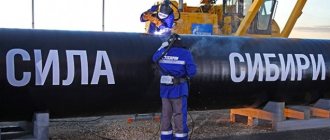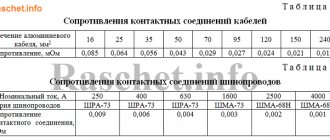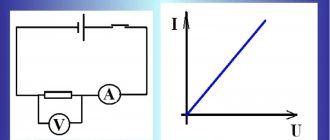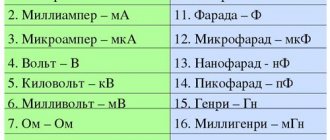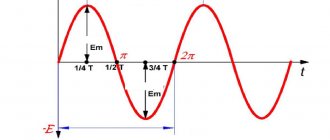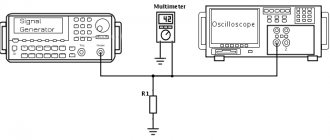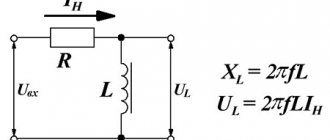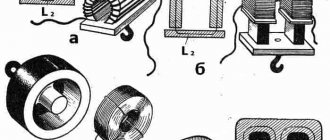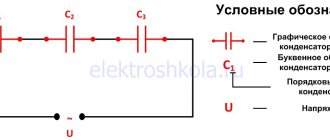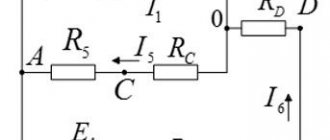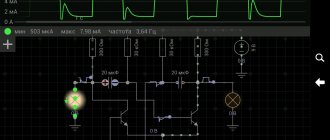To power a 10 kV indoor switchgear, it is necessary to select and check the cross-section of 10 kV busbars from a 16 MVA power transformer.
Initial data:
- Maximum three-phase short-circuit current on busbars 10 kV – Ik.z = 9.8 kA;
- Power transformers type TDN-16000/110-U1 are loaded at 60%.
Calculation
According to the PUE, 7th edition, clause 1.3.28, the check for economic feasibility is not performed, therefore, the selection of tires will be made only according to the long-term permissible current (PUE, 7th edition, clause 1.3.9 and clause 1.3.22).
Tires are checked for thermal and electrodynamic resistance to short circuits (PUE 7th edition, clause 1.4.5).
Selection of copper bars
The copper electrical busbar is a conductor with low resistance. Copper electrical busbars are made with a rectangular cross-section. Visually, a copper electrical busbar is similar to a sheet, but thicker. UMMC-OTsM produces copper electrical busbars in a wide range of sizes: thickness 1.2 - 80 mm and width 8 - 250 mm. Tires are produced in pressed and drawn condition, in coils and sections.
Cracks, cavities, blisters, transverse tears and dirty technological lubricants are not allowed on the surface of copper busbars. Deviations in cross-sectional shape, mechanical properties, crescent shape do not exceed the values established by regulatory documentation. It is possible to produce non-standard tire shapes. In this case, the shape is specified in the specification and a drawing of the future product must be attached.
The choice of copper busbar depends on the conditions of use. When choosing the current cross-section of copper busbars, take into account the maximum current that will flow through the busbar. Section - the ratio of width and thickness. Based on the value of the maximum current, the busbar cross-section is selected according to PUE and GOST 434-78.
Aluminum tire weight calculator
Calculation of the theoretical weight of a rectangular aluminum bus
Often, calculations require the weight of any rolled aluminum part. You can, of course, use a regular calculator, remembering the simple formulas for the weight of a rectangle. But you can’t immediately remember the formula for calculating a hexagon, but how to calculate the weight of aluminum corners? Our rolled aluminum weight calculator will help you! Select the type of rolled aluminum you are interested in, enter the dimensions and length. For a more accurate calculation, you can select an alloy a little further to the right. This calculator can also calculate the weight of copper bars! Calculation of the weight and cost of a batch of aluminum electrical bus!
Features of choosing a copper bus for current
The shown examples of long-term permissible current indicators for copper busbars are given based on the permissible heating temperature of up to 70o C. The ambient temperature should not exceed 25o C. Reliability of operation of copper electrical busbars is ensured when heated no higher than 85o C. But when choosing the cross-section of a copper busbar, the maximum possible permissible temperature of the components with which the product interacts. And the probability that the ambient temperature will exceed 25o C.
To facilitate the selection, technical specialists have calculated correction factors. The maximum current parameters have been recalculated for several temperature conditions. These tables are publicly available. They will help you make the right choice.
If there are no strict criteria, the choice is made in favor of flexible tires. They are more durable and have better characteristics.
Example of selection of 10 kV rigid busbars
To power a 10 kV indoor switchgear, it is necessary to select and check the cross-section of 10 kV busbars from a 16 MVA power transformer.
- Maximum three-phase short-circuit current on busbars 10 kV – Ik.z = 9.8 kA;
- Power transformers type TDN-16000/110-U1 are loaded at 60%.
According to the PUE, 7th edition, clause 1.3.28, the check for economic feasibility is not performed, therefore, the selection of tires will be made only according to the long-term permissible current (PUE, 7th edition, clause 1.3.9 and clause 1.3.22).
Tires are checked for thermal and electrodynamic resistance to short circuits (PUE 7th edition, clause 1.4.5).
Permissible continuous current for rectangular busbars
| Dimensions, mm | Copper bars | Aluminum tires | Steel tires | |||||||
| Current*, A, with the number of stripes per pole or phase | Dimensions, mm | Current*, A | ||||||||
| 1 | 2 | 3 | 4 | 1 | 2 | 3 | 4 | |||
| 15 x 3 | 210 | 165 | _ | 16×2,5 | 55/70 | |||||
| 20 x 3 | 275 | — | — | — | 215 | — | — | — | 20×2,5 | 60/90 |
| 25 x 3 | 340 | — | — | — | 265 | — | — | — | 25 x 2.5 | 75/110 |
| 30 x 4 | 475 | — | — | — | 365/370 | — | — | — | 20 x 3 | 65/100 |
| 40 x 4 | 625 | -/1090 | — | — | 480 | -/855 | — | — | 25 x 3 | 80/120 |
| 40x 5 | 700/705 | -/1250 | — | — | 540/545 | -/965 | — | — | 30x 3 | 95/140 |
| 50x 5 | 860/870 | -/1525 | -/1895 | — | 665/670 | -/1180 | -/1470 | — | 40×3 | 125/190 |
| 50×6 | 955/960 | -/1700 | -/2145 | — | 740/745 | -/1315 | -/1655 | — | 50×3 | 155/230″ |
| 60×6 | 1125/1145 | 1740/1990 | 2240/2495 | — | 870/880 | 1350/1555 | 1720/1940 | — | 60 x 3 | 185/280 |
| 80×6 | 1480/1510 | 2110/2630 | 2720/3220 | — | 1150/1170 | 1630/2055 | 2100/2460 | — | 70 x 3 | 215/320 |
| 100×6 | 1810/1875 | 2470/3245 | 3170/3940 | — | 1425/1455 | 1935/2515 | 2500/3040 | — | 75 x 3 | 230/345 |
| 60 x 8 | 1320/1345 | 2160/2485 | 2790/3020 | — | 1025/1040 | 1680/1840 | 2180/2330 | — | 80 x 3 | 245/365 |
| 80 x 8 | 1690/1755 | 2620/3095 | 3370/3850 | — | 1320/1355 | 2040/2400 | 2620/2975 | — | 90×3 | 275/410 |
| 100×8 | 2080/2180 | 3060/3810 | 3930/4690 | — | 1625/1690 | 2390/2945 | 3050/3620 | — | 100×3 | 305/460 |
| 120×8 | 2400/2600 | 3400/4400- | 4340/5600 | — | 1900/2040 | 2650/3350 | 3380/4250 | — | 20×4 | 70/115 |
| 60 x 10 | 1475/1525 | 2560/2725 | 3300/3530 | — | 1155/1180 | 2010/2110 | 2650/2720 | — | 22 x 4 | 75/125 |
| 80 x 10 | 1900/1990 | 3100/3510 | 3990/4450 | — | 1480/1540 | 2410/2735 | 3100/3440 | — | 25 x 4 | 85/140 |
| 100 x 10 | 2310/2470 | 3610/4325 | 4650/5385 | 5300/6060 | 1820/1910 | 2860/3350 | 3650/4160 | 4150/4400 | 30×4 | 100/165 |
| 120 x 10 | 2650/2950 | 4100/5000 | 5200/6250 | 5900/6800 | 2070/2300 | 3200/3900 | 4100/4860 | 4650/5200 | 40×4 | 130/220 |
| 50×4 | 165/270 | |||||||||
| 60×4 | 195/325 | |||||||||
| 70×4 | 225/375 | |||||||||
| 80×4 | 260/430 | |||||||||
| 90x 4 | 290/480 | |||||||||
| 100×4 | 325/535 | |||||||||
*The numerator shows the values of alternating current, the denominator shows the values of direct current.
What is the continuous current limit for an aluminum busbar?
| Tire section, mm | Direct current, A | Alternating current, A |
| Continuous permissible current for aluminum bus 15×3 | 165 | 165 |
| Continuous permissible current for aluminum bus 20×3 | 215 | 215 |
| Continuous permissible current for aluminum bus 25×3 | 265 | 265 |
| Continuous permissible current for aluminum bus 30×4 | 370 | 365 |
| Continuous permissible current for aluminum bus 40×4 | 480 | 480 |
| Continuous permissible current for aluminum bus 40×5 | 545 | 540 |
| Long-term permissible current for aluminum bus 50×5 | 670 | 665 |
| Continuous permissible current for aluminum bus 50×6 | 745 | 740 |
| Long-term permissible current for aluminum bus 60×6 | 880 | 870 |
| Long-term permissible current for aluminum bus 60×8 | 1040 | 1025 |
| Long-term permissible current for aluminum bus 60×10 | 1180 | 1155 |
| Continuous permissible current for aluminum bus 80×6 | 1170 | 1150 |
| Long-term permissible current for aluminum bus 80×8 | 1355 | 1320 |
| Long-term permissible current for an aluminum bus 80×10 | 1540 | 1480 |
| Long-term permissible current for aluminum bus 100×6 | 1455 | 1425 |
| Long-term permissible current for aluminum bus 100×8 | 1690 | 1625 |
| Long-term permissible current for aluminum bus 100×10 | 1910 | 1820 |
| Continuous permissible current for aluminum bus 120×8 | 2040 | 1900 |
| Long-term permissible current for aluminum bus 120×10 | 2300 | 2070 |
You can buy electrical copper and aluminum busbars from our company from the warehouse and on order:
At Nevskaya Aluminum Company you can buy aluminum from a warehouse in St. Petersburg or order delivery throughout Russia.
The warehouse of the Nevskaya Aluminum Company is located at 266 Ligovsky Prospect, not far from the Moskovskie Vorota metro station, next to the freight highway - Vitebsky Prospekt, exits to the WHSD and the Ring Road. Loading documents are issued on site.
Source
Advantages of copper busbars
Along with copper busbars, aluminum busbars are used in electrical engineering. Aluminum tires are valued for their affordable price and lightness of the metal. However, in the long term, copper bars will be a cost-effective solution.
Copper has high thermal conductivity. With the same cross-section, a copper busbar will withstand a percentage greater load than an aluminum busbar of the same size. The copper busbar minimizes energy loss during transmission. They are highly elastic and resistant to stretching. The copper bus bends easily without losing its technical properties. This allows smaller distribution and power units to be assembled. It is resistant to high and low temperatures and can withstand higher voltages. When choosing between an aluminum busbar and a copper one, preference is given to the latter.
How much does a linear meter of aluminum electrical bus weigh?
In some cases, when the standard cross-sectional dimensions of an aluminum bus are not suitable, it is more convenient to make your own calculations. Due to numerous requests from customers, we have created and offer to your attention a calculator for calculating the weight of a linear meter of an aluminum electrical bus, which is complemented by the ability to calculate the approximate amount for the purchase of this tire. Be careful, this calculator only provides a weight guide, as well as an estimate of the cost of the tire is not a commercial offer and the price is indicative!
Dimensions
Be careful: the calculator gives only approximate weight and estimated cost! The weight and cost of actual tires may vary significantly!
Specialized calculators for calculating the weight of rolled metal
Also in our “Directory” section you can use other calculators to calculate weight or buy an AD31 aluminum tire from stock
Aluminum Reference Materials
Also in our “Directory” section you can study the calculation tables for electrical buses:
Bending copper and aluminum busbar
Tire bending is carried out on specialized hydraulic bending machines. Markings are first applied to the tire, allowing you to accurately position the bending point in the machine. During the bending process, the bending angle is controlled, which allows tires to be accurately reproduced to a given size.
The bending angle can be different and is determined only by the joints and connections of the busbars, as well as the ease of assembly and subsequent maintenance.
To change the direction of the tire plane, a longitudinal twist of 90º is applied.
Our production specialists will be happy to bend tires according to your drawings and specifications.
Methods for calculating cable cross-sections
There are two ways to determine the required cable cross-section. When calculating, it is necessary to apply both methods and use the larger of the obtained values.
Calculation of heating section
As electric current flows through the cable, it heats up. The permissible heating temperature and wire cross-section depend on the type of insulation and installation methods. If the cross-section of the conductor is insufficient, it heats up to an unacceptable temperature, which can lead to destruction of the insulation, short circuit and fire.
Advice! For a thorough calculation, it is necessary to use special tables, programs or online calculators, but for most practical tasks it is possible to use the table that can be found in the PUE, paragraph 1.3.10.
Calculation of cross-section based on permissible voltage losses
The conductor in a wire has resistance and when current passes through it, according to Ohm's law, a voltage drop occurs. The magnitude of this drop increases as the cable cross-section decreases and its length increases.
When laying a long cable, its cross-section required to reduce losses can be many times greater than the value selected for permissible heating. For calculations, special formulas, programs and online calculators are used.
Advice! When connecting devices operating at reduced voltage, the power supply is located as close as possible to the device.
Perforation of copper and aluminum busbar
To connect busbars in a busbar trunking to each other, as well as to connect supply and outgoing lines, holes of the appropriate diameter are marked and perforated in the busbar using a busbar puncher. The distance between the holes is calculated in such a way that the tips of the connections do not touch each other and it is convenient to make connections, and subsequently, during operation of the electrical installation, to draw bolted connections.
The busbars and cable connections are made using bolts and nuts exclusively with Belleville washers. The use of busher-type washers is highly discouraged, since with strong heating (for example, a short circuit), the busher loses its springy properties, as a result of which the bolted connection becomes unreliable, and the contact resistance t at the connection point increases.
Checking tires for thermal stability
2.1. We determine the thermal impulse that is released during the short circuit current according to expression 3.85 [L2, p. 190]:
- Ip.0 = 9.8 kA – initial effective value of short-circuit current on 10 kV busbars.
- Ta is the decay time constant of the aperiodic component of the short circuit current. For approximate calculations, the value of Ta is determined according to table 3.8 [L2, p. 150]. For a transformer with a power of 16 MVA, we take Ta = 0.04. If you want to more accurately calculate the Ta value, you can use the formulas presented in paragraph 6.1.4 of GOST R 52736-2007.
2.1.1. We determine the total short circuit shutdown time using expression 3.88 [L2, p. 191] and according to paragraph 4.1.5 of GOST R 52736-2007:
toff.= tр.з.+ tо.в=0.1+0.07=0.18 sec.
- tr.z. – the duration of the main transformer protection is 0.1 seconds (recloser is not provided).
- tо.в – the total switch-off time is selected from the catalogue, equal to 0.07 seconds.
2.2. We determine the minimum cross-section of tires for thermal resistance during short circuit using expression 3.90 [L2, p. 191]:
where: C is a function whose values are given in Table 3.14. For aluminum tires C = 91.
As we can see, an aluminum bus with a cross-section of 80x10 mm was previously adopted - it is thermally stable.
